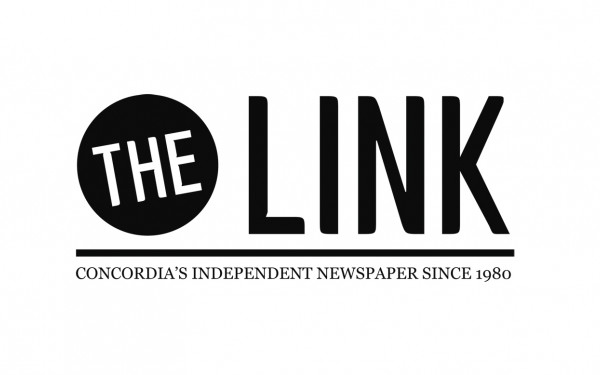Science For Sale
Examining Research Commercialization at Concordia
In recent decades Canadian universities, including Concordia, have gained intellectual property rights over their researchers’ work and are attempting to capitalize from it. But returns are slim and costs are high, and the practice has raised ethical concerns. What really makes Concordia want to commercialize?
“My job here is to invent new ideas,” Concordia engineering professor Muthukumaran Packirisamy told The Link in July, sitting in his office in the EV building.
Packirisamy is known in the academic world for developing microsensors used in medical diagnosis and telecommunications.
“It’s like giving a knife—you can use it for a million applications,” he said.
Packirisamy’s work has won him acclaim at Concordia. Not the least of his achievements, he was the first person at the university to successfully commercialize an invention through Valeo Management.
Over the past 13 years Concordia has paid a total of $1.75 million* to Valeo, a company that patents Concordia researchers’ inventions and licenses them out to third parties. During this time, revenues from licensing have generated about $595,000 for the university. But almost all of these revenues were made from the licensing of a single invention in 2006**—an innovation of Packirisamy’s in the field of micro-electromechanical systems.
Though research commercialization is not well known to the general public, it’s a fact of life in many university departments. Whenever a Concordia academic makes a discovery, they are required to detail it in a “declaration of invention.”
From there, Concordia’s Office of Research can, with the inventor’s permission, send the declaration to Valeo, whose offices are located in downtown Montreal. Valeo then takes on the process of patenting the technology, and looks for companies or organizations that will either pay to use it or fund its further development. If the technology generates revenue, the university and the inventor share the profits.***
But so far these profits have been less than astounding.
When Valeo’s president and CEO, Anne-Marie Larose, was asked how she justified the gulf between what Concordia pays Valeo and what it makes from commercialization, she said that it was important to remember that Valeo is a “relatively young” company and that “to have revenues that compensate [for expenses], it takes time.”
“It’s utopic to think that, on a short-term horizon, we can get to the break-even point,” she said, mentioning that the University of British Columbia took 17 years to break even on its commercialization activities. She also explained that Valeo helps the university find grant money and corporate research funding directed towards maturing technologies toward commercialization.
Concordia’s administration doesn’t seem concerned by the lack of returns. According to VP Research and Graduate Studies Graham Carr, profitability is “really not the issue” when it comes to commercialization.
“The reality for most universities is that you invest in technology transfer but you’re not necessarily expecting to make a profit on it,” he said. “The goal is to help develop the larger innovation capacity for Quebec universities and for Quebec as a whole.”
Carr pointed out that because Valeo provides its services to multiple universities at once—six schools in the Université du Québec network are also partners in the company—it can do the work more cheaply than if Concordia were to take on the costs itself. According to an email from Valeo to The Link, the company has spent $1.2 million on Concordia’s patent expenses alone over the years, which it says saves the university in human resources costs.
But universities didn’t always patent their researchers’ discoveries. Historically, academics have shared research results freely, letting the public use them as it wished.****
So why does Concordia want to hold and protect intellectual property rights over the innovations created in its labs?
The Push to Innovate
To answer that question, it’s useful to go back to where Valeo’s story begins. In 1999, the Quebec government launched Valorisation Recherche Québec, an organization to which it gave $50 million to expand research commercialization in the province’s universities. The money was used to establish four sociétés de valorisation, companies that patent researchers’ discoveries and find other companies to buy them.
Valorisation Innovation Plus (later renamed Valeo Management) was one of these companies, and Concordia was invited to take part. After a closed-session discussion at the university’s Board of Governors—VIP’s business plan was kept confidential until after the meeting—Concordia joined the project in November 2000.
The administration was optimistic.
“The commercial success that is expected from commercializing the work of our researchers will contribute to the self-financing, at least in part, of Concordia University’s obligations once the initial five year start-up process is completed,” wrote Jack Lightstone, Concordia’s then-Provost and Vice-Rector, Research, in a document recommending the partnership.
Lightstone’s hopes must have seemed natural at the time. American universities had been patenting inventions left and right since it became possible in 1980. In Canada, a 1991 regulatory change under the Mulroney government transferred the intellectual property rights on federally financed research results from the Crown to the research institutions themselves, allowing universities the option of commercialization. Technology transfer was seen as an exciting opportunity across the country, a chance to get ahead in the new “knowledge-based economy.”
In 1999, the federal government released a report entitled “Public Investments in University Research: Reaping the Benefits.” It was authored by a panel of mainly businesspeople and chaired by Pierre Fortier, an ex-MNA with strong corporate links. He’d been Robert Bourassa’s Minister of Privatization and was at the time a senior advisor to Innovitech Inc., a management and consulting firm that would go on to establish an aerospace research consortium using VRQ funds.
“Research-based innovation originating in universities has the potential to contribute much more than it does now,” read Fortier’s report, promising that commercialization would “increase the return to Canada on the investment in university research made by taxpayers.”
A clear message had been sent: commercialization was a top priority for the Canadian government, and it should be everyone else’s as well.
“Ever since then, there’s been a number of policies and programs […] to promote commercialization,” said Claire Polster, a University of Regina sociologist who specializes in higher education, in an interview with The Link. “Some policies are put into place, some offices are put into place, and things then sort of just begin to transform.”
“The reality for most universities is that you invest in technology transfer but you’re not necessarily expecting to make a profit on it,” he said. “The goal is to help develop the larger innovation capacity for Quebec universities and for Quebec as a whole.” —Concordia VP Research and Graduate Studies Graham Carr
Governments at both the provincial and federal level were eager for commercialization to be a success, and invested heavily in Valeo in its early years. In addition to its universities’ yearly contributions and the $10.5 million in start-up funds it received from VRQ, the company was granted a $2-million repayable contribution from Canada Economic Development in 2004. While it’s unclear how all of these funds were used, Valeo was able to spend over $530,000 to directly fund Concordia research projects with commercial potential, mostly between 2000-2007. This investment made Concordia researchers eligible for an additional $700,000 in Quebec funding.
Although Valeo proved a lucrative conduit for government money, its commercialization gains didn’t hold up to expectations. Documents from Concordia show that in 2000, it was hoped that VIP would achieve more than 100 licences or marketed technology transfers, and create 50 spin-off companies in its first seven years. However, a 2007 document states that Valeo had produced only eight licences and four spin-offs for all of its university partners since its founding.***** Since then, Valeo has produced 22 licences and nine spin-offs for all its partner universities.
VRQ went defunct in 2006, but Valeo is still very much in business. The company is currently in the process of merging with another société de valorisation, McGill’s MSBiV. Although Valeo has only obtained a handful of patents for Concordia in recent years, one invention—an energy-efficient heat exchanger—has recently been licensed to a local firm. It’s expected to generate revenue within two years.
In 2009, Canadian universities and research hospitals spent $56.7 million on identifying, protecting, promoting and commercializing intellectual property, while income from intellectual property came to $67.4 million. That makes for a $10-million profit margin—but of course, not every university benefits equally.
And those numbers don’t take into account the millions that federal and provincial governments spend every year to fund industry-oriented university research. In recent decades, federal funding councils like the National Science and Engineering Research Council and Canadian Institutes of Health Research, as well as Quebec funding organizations, have dedicated an increasing amount of grant money to “partnership research,” awarding grants to academics only if they collaborate with an outside company to develop an innovation that will be useful on the market.
In fact, the importance of partnership research may be one of the reasons that Concordia is so loyal to Valeo. In order for its researchers to have access to partnership grants, Concordia needs contacts with corporations who are willing to match government contributions, and Valeo provides these contacts.
“We find partners,” Larose said. “A company might not necessarily want to take a licence today, but might still [want to] do collaborative research.”
Taking grant money and corporate research contracts into account, “The gains [from Valeo] are much greater than just the revenues from licensing,” Larose said. “I find it reductive to just calculate in terms of licences.”
In an email to The Link, Concordia’s Communication Services said that Valeo has “little to do with our research partnerships with industry.” However, Valeo lists the total dollar amount of “grants, financing and research contracts for [Concordia] files managed by Valeo” at $3.6 million.
The Knowledge Debate
The partnership grant system is not without its critics, much like research commercialization itself. Making research serve the needs of industry—and using government dollars to do it—is a contentious issue in the academic community.
Howard Woodhouse, a University of Saskatchewan education professor and author of Selling Out: Academic Freedom and the Corporate Market, expressed his concerns in an interview with The Link:
“The costs and the risks [of research are] borne by the public, and the gains and the profits are privatized,” he said. “The public are paying for what they then have to pay again for on the market.”
Woodhouse argues that with commercialization, “Not only are [universities] often losing money, but they’re also losing their capacity to be independent and critical centers of research,” since “the goal of the research is not really to publicize the science, it is to make a profit.”
Like Woodhouse, Polster is critical of commercialization. In fact, she believes that universities shouldn’t be in the intellectual property business in the first place.
“The universities’ mission is to produce and disseminate knowledge,” she said. “It’s kind of perverse, I would say, for universities to be in the business of preventing other people from using knowledge, rather than making knowledge as freely available as possible.”
She argues that even from a business perspective, the utility of patenting research is dubious. If innovations were free to use, she said, “people could still use the knowledge, but the access would be less restricted [and] the benefits could be increased.
“As the universities privatize knowledge that may have been helpful to other industries to develop themselves, it becomes inaccessible,” she explained. “[Businesses] have to pay for it, if they want to use it. That increases their cost, which can decrease their competitiveness.”
Polster also pointed out that Canadian industry doesn’t invest very much in research and development. “And why should it, if it gets all this publicly-subsidized research being done for it?” she said.
So if commercialization, in addition to being so expensive, has questionable benefits for both science and the economy, the question remains: why do we keep doing it?
Polster thinks that the reason commercialization still has so much support within universities is that certain well-placed actors—businesses that want subsidized research, administrators hoping for a windfall, governments looking to develop an innovative economy, academics who profit personally—find or perceive an interest in it, but “don’t understand the larger implications.”
Concordia’s Office of Research, however, sees things quite differently.
“Commercializing intellectual property is vital to the continued success and growth of Concordia’s research capacity and contributing to Canada’s economy and social systems,” wrote Shelly Sitahal, associate director of the Office’s Research Partnerships and Innovation Unit, in an email to The Link.
“The protection and commercialization of university intellectual property not only provides universities the opportunity to contribute to our nation’s economic growth, but also increases their capacity to generate direct financial returns and ultimately recruit and retain professors and students,” Sitahal continued, quoting the Fortier report.
Governors and Goals
Polster thinks that the rise of commercialization cannot be linked back to a single ideology or entity, but that it’s “become a process or a dynamic that’s expanded and developed in all kinds of complicated ways.”
But, she says, “a lot of people who are at the top, the policymakers and the people who run the institution and the powerful people within the institution, and industry […] they’re perpetuating it.”
The decision of whether or not to keep using Valeo’s services is vested with Concordia’s Board of Governors. And here might lie another reason why Concordia, despite years of tight budgets, keeps pursuing the project.
A large percentage of Concordia’s current and former board members have come from Montreal’s business community. These governors—higher-ups at Power Corporation, SNC-Lavalin and Hydro-Quebec, to name a few—could all conceivably see the benefits for their companies from having an infrastructure in place to facilitate corporate research contracts and commercialize the university’s research results.
When the board decided to join VIP in 2000 only two members voted against the plan; both were student representatives. Subsequent motions on Valeo have always passed.
What’s more, every time the board has been asked to make a decision on Valeo, it has received briefings from research administrators who were favourable to the project, highlighting its benefits and downplaying its cost. In his interview, Graham Carr said that he “absolutely” wanted Concordia to continue its partnership with Valeo into the future.
The goal, he says, is to “make better connections between what is happening on campus to what could be the transferrable benefit of those to society and to corporations and other groups.
“Sociétés de valorisation like Valeo, they perform that role.”
Notes on the text:
*Concordia documents obtained in May 2013 list Concordia’s contributions at $1,755,029 while an August email from Valeo quotes the figure at $1,705,691.
**According to the Office of Research, “the only commercialization revenues realized by Concordia through our relationship with Gestion Valeo was derived from a licensing arrangement relating to one of Dr. Packirisamy’s technologies. Valorbec, acting through Gestion Valeo, acquired 933,120 shares in consideration for a licence to the technology, of which 377,800 were sold at an average share price of $1.49 resulting in approximately $570,000 in realized revenues. The remaining share holding of 555,320 were later consolidated resulting in a current consolidated holding of 27,766 shares. This share position represents future revenues, the value of which will be determined by the share price at the time of sale.” An email from Valeo Management quoted revenues from licensing at $595,000 and said that these revenues came from two licences.
***As laid out in the 2007-2012 CUFA agreement, the university splits the profits from commercialization 50-50 with inventors (27.18). Valeo takes a 5 per cent cut.
****Concordia researchers who commercialize research results have the right to publish these results in academic journals, although this right may be suspended for 90 days or as otherwise agreed by all parties involved, under the terms of the aforementioned CUFA agreement (27.21).
*****The same documents project contributions from Concordia to Valeo of $3.6 million from 2001-2007, much greater than the approximately $836,000 that the university actually paid over this period.

.ed2.WEB_2_682_392_90.jpg)




